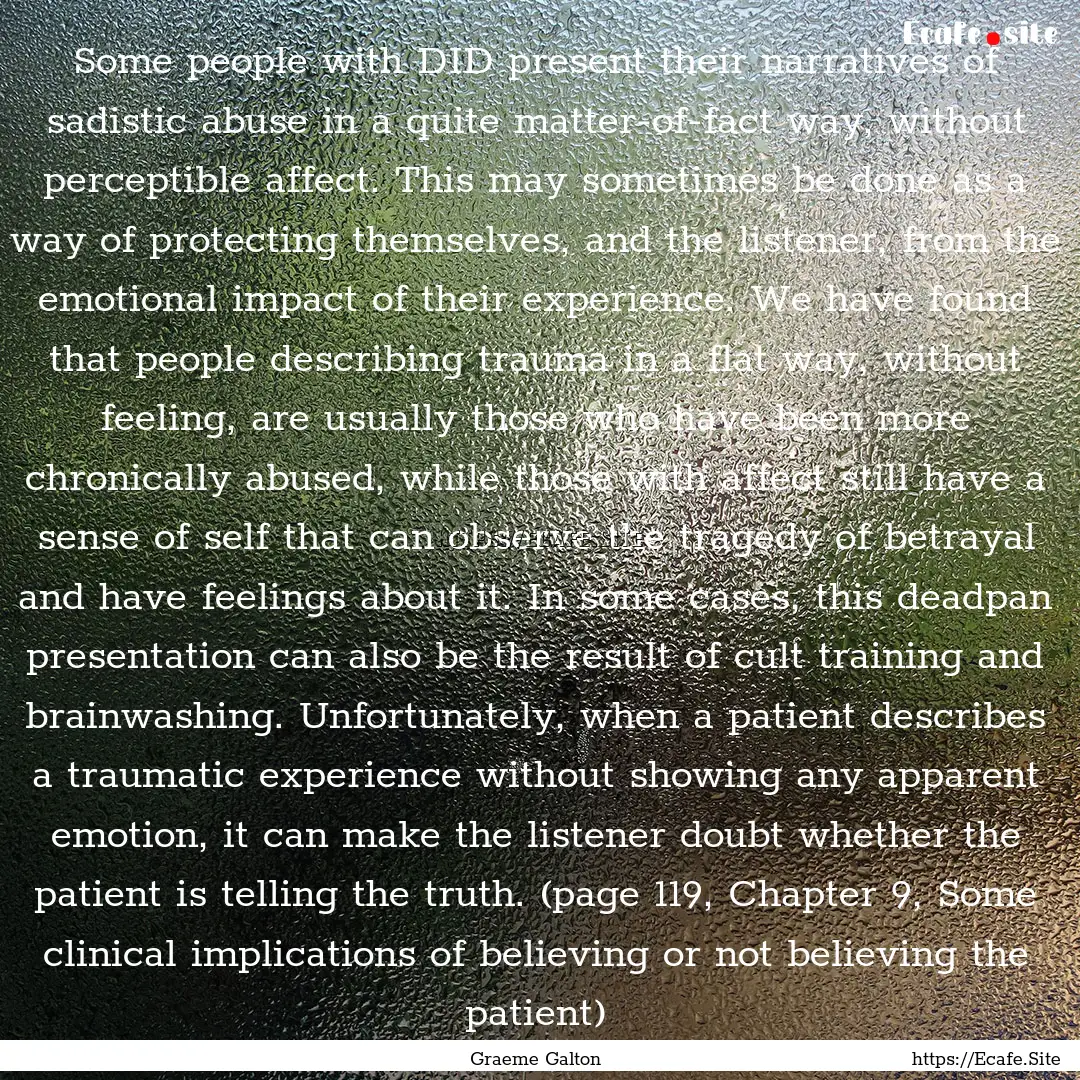
Report, if you have a problem with this page“ Some people with DID present their narratives of sadistic abuse in a quite matter-of-fact way, without perceptible affect. This may sometimes be done as a way of protecting themselves, and the listener, from the emotional impact of their experience. We have found that people describing trauma in a flat way, without feeling, are usually those who have been more chronically abused, while those with affect still have a sense of self that can observe the tragedy of betrayal and have feelings about it. In some cases, this deadpan presentation can also be the result of cult training and brainwashing. Unfortunately, when a patient describes a traumatic experience without showing any apparent emotion, it can make the listener doubt whether the patient is telling the truth. (page 119, Chapter 9, Some clinical implications of believing or not believing the patient) ”

Graeme Galton
From : Forensic Aspects of Dissociative Identity Disorder



